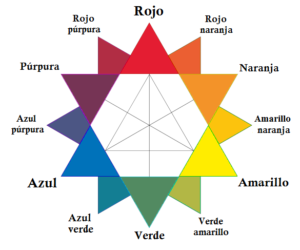
Updated November 23, 2021.
You may not know it but the direction of the light coming into a room can vastly affect the colors in it.
This is most important in home decorating (i.e. wall and furniture colors) but it is also useful when thinking about needlepoint that will go into a room. That’s why sometimes colors look different in different places. It also explains why it’s always good to check the colors of your thread, if possible in the room where it will live. If that isn’t possible, check colors in a room with windows facing the same direction. If you live in a different area, where the color of the light is different, check the threads in a room with neutral light.
Here’s a breakdown of the color of light and direction:
North light is a cool blue light, never direct, always indirect throughout the day (this is true of the south in the southern hemisphere). This is because in the northern hemisphere the sun never is always south of us. Artists like north light the best because it is indirect.
East light is a warm, light yellow light. It is only direct in the morning and is second best for artists after north light.
Southern light (in the northern hemisphere) is a bright light, yellow in color, and is direct much of the day. Because this light is more direct than others, it tends to be a bit harsher. Punching up the color in south-facing rooms can be good.
Western light is the most colored light because the slanting rays of the sun have further to travel in the atmosphere and get colored. It has, by far, the most affect on colors. It is a warm, apricot color and can be almost orange.
The main color of the light is what you should plan for in checking colors, but other things can have an effect as well. Cloud cover turns the sunlight indirect and darkens the light. Your geographical location and altitude also affect color, although not as much.
Finally, in thinking about color in your needlepoint, think about artificial lighting in the room. Incandescent light is a warm orangish light. Many CFLs and LEDs these days have a similar color, so you don’t need to worry about that. “Natural” light bulbs are often somewhat bluish and sometimes very cold. I have found this to be particularly a problem in some brands but not others. In my old office, the “natural” floodlights that were the main general lights in the room were so harsh they hurt to look at them.
Old-fashioned fluorescent lights (like you used to find in offices) were slightly green. To combat this often the inside of the bulbs were coated with a light pink or orange. Improvements in technology have improved this greatly.
I’ve been thinking about this recently as I have been planning some needlepoint for different rooms and thinking about what would look good. I have one room, my son’s bedroom, that we are turning into a sitting room. It has both east and west windows the same size, but the west sun hits them directly. The light some evenings is actually orange (I’m not kidding) and that is determining everything about the room, even the needlepoint.

Strangely enough, I painted the room blue, which was the only color that didn’t get washed out (the room next door has orange, so that wasn’t an option). The blue looks better in the morning light but still can stand up to that western orange. Many shades of blue are in the room (above) with black furniture and accents of red. Stitching needlepoint for it is going to be an interesting exercise.
About Janet M Perry
Janet Perry is the Internet's leading authority on needlepoint. She designs, teaches and writes, getting raves from her fans for her innovative techniques, extensive knowledge and generous teaching style. A leading writer of stitch guides, she blogs here and lives on an island in the northeast corner of the SF Bay with her family

Leave a Reply